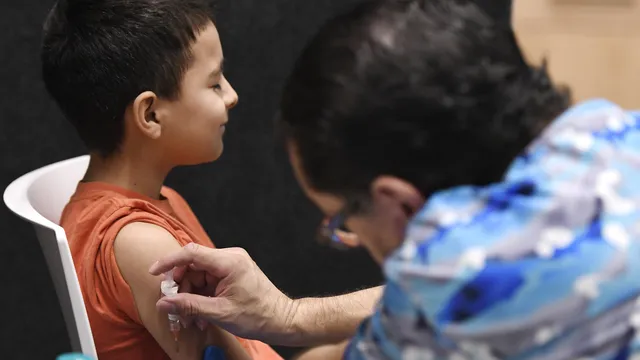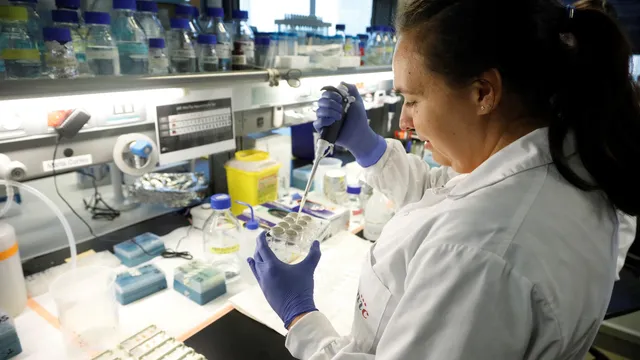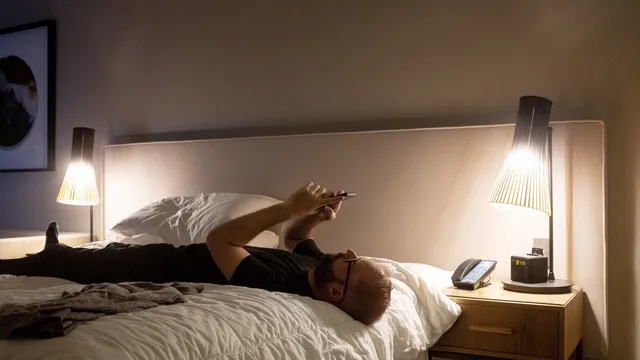The US is currently facing one of the worst measles outbreaks in decades, with at least 569 cases reported in several states. A new analysis has shown that nearly a third of young children who were eligible to be vaccinated against the disease did not receive their first shot on time, CNN reports.
Measles is an extremely contagious disease that is transmitted by the airborne route and can be especially dangerous for young and unvaccinated children. The measles, mumps and rubella (MMR) vaccine is very effective, with one injection providing 93% protection against measles and a second injection boosting it to 97%. The first dose is recommended between the ages of 12 and 15 months, and the second between the ages of 4 and 6 years.
According to a new report from Truvada, a healthcare data and analytics company, by 2024, only 68.5% of children in the U.S. will have received their first dose at 15 months of age. That's a significant drop from 2020, when more than 77% of children received their first dose at that age.
"The group of children who could get really sick, have severe complications and possibly die has been increasing every year since Kovida," said Dr. Nina Masters, a senior research scientist at Truvada and former epidemiologist at the U.S. Centers for Disease Control and Prevention. "Especially among these outbreaks, it's very troubling to see in the data."
The U.S. Department of Health and Human Services has set a goal that at least 95 percent of kindergarten children will have received two doses of the MMR vaccine, a threshold needed to prevent measles outbreaks.
But leaving more than 30% of a particularly vulnerable group of young children without any protection from a single dose poses an unnecessary risk, experts say.
"Don't delay, especially not now," Dr. Ashish Jha, dean of Brown University's School of Public Health, who was federal coordinator for the Covid-19 response in the Biden administration, advises parents.
At least 631 cases of measles have been reported in the U.S. this year, according to a CNN fact sheet. This is only the third year with more than 500 cases since measles was declared eradicated in this country a quarter century ago.
According to the Texas State Health Department, the epicenter of the current epidemic, about one-third of all reported cases are among children under age 5. Nearly all were unvaccinated.
"When the vaccination rate drops below 95 percent, the ability of this virus to begin circulating in the community increases significantly," Jha said. "Even small reductions in the percentage of school-age children vaccinated can mean much larger epidemics in terms of the number of children affected."
He said under-vaccinated parts of the U.S. create wider vulnerability. When vaccine-eligible children are not vaccinated, it creates a greater risk that the virus will reach those too young to be vaccinated.
"It's essentially like dry wood waiting to be set on fire," said Jha. "What we have are very vulnerable communities in America. I think we're playing Russian roulette with these outbreaks because obviously people are not staying put."
Truvada's new report also highlights the gap between vaccination rates of children in urban areas, where 75 percent of children received a dose of MMR by 15 months of age, and rural areas, where only 65.5 percent of children received the vaccine.
The reasons for this disparity can be "broken down into structural barriers and then vaccine hesitancy," says Dr. Catherine Troisi, an infectious disease epidemiologist at the University of Houston Health System.
In rural areas, there may be fewer medical providers overall and people may have to travel farther to get vaccinated, she says.
Troisi pointed out that studies show there are also more people in rural areas who "may believe some of the misinformation about immunizations."
The Texas outbreak began in rural Gaines County, which now has 315 cases, according to the state health department, though experts say that is likely a severely underestimated number.
MMR vaccine coverage is particularly low in Gaines County, where nearly one in five new kindergarten entrants in the 2023-24 school year did not receive the vaccine. Some other counties affected by the outbreak, which now includes New Mexico, Oklahoma and possibly Kansas, are also falling short of 95% vaccination.
Epidemic data show that 58 people have been hospitalized, all of whom have not received the measles, mumps and rubella (MMR) vaccine or are of unknown vaccination status.
Most of the reported cases are in people under 18 and experts are concerned about an increase in hospitalisations, especially in younger children who are at higher risk of complications.
"The more kids who get sick means there's an increased chance of more kids getting sick from measles complications," says Dr. Christina Johns, a pediatric emergency medicine physician at PM Pediatrics in Annapolis, Maryland.
One death of a school-age child has been reported in Texas, and one death in New Mexico is still under investigation.
Another new report from Truvada found that in 2024, only 80.4% of children had received two doses of the MMR vaccine by age 6, far lower than CDC estimates of just under 93% coverage for kindergarteners in the 2023-24 school year.
Analyses of the data cover two different populations, and "the truth is probably somewhere in the middle," said Masters, who has studied measles for the past decade.
Truvada's database captures the electronic health records of nearly one-third of the U.S. population and covers nearly one-fifth of the country's daily clinical care, but the results of the analysis of people who seek primary care more regularly may not be fully representative of nationwide trends.
But vaccination data from the CDC are also estimates based on surveys of varying representativeness, none of which could capture the growing proportion of children who are being home schooled.
Other recent studies also suggest that MMR vaccine coverage may be lower than federal data indicate.
According to a study, published last month in the American Journal of Public Health, a survey of nearly 20,000 parents between mid-2023 and mid-2024 found that only 71.8 percent said their children had received at least one dose of the MMR vaccine by age 5.
Although each analysis may differ in its approach, the consistent finding of declining vaccination rates is the most significant finding, Masters said.
"Every analysis, every epidemic, always has the same conclusion that epidemics are ended with rapid, immediate mass vaccination. That's how epidemics are controlled," she said. "We are going in the wrong direction. We are not getting closer to getting the situation under control and we are ending up with a situation where there are more children at risk instead of fewer." | BGNES

 Breaking news
Breaking news
 Europe
Europe
 Bulgaria
Bulgaria







